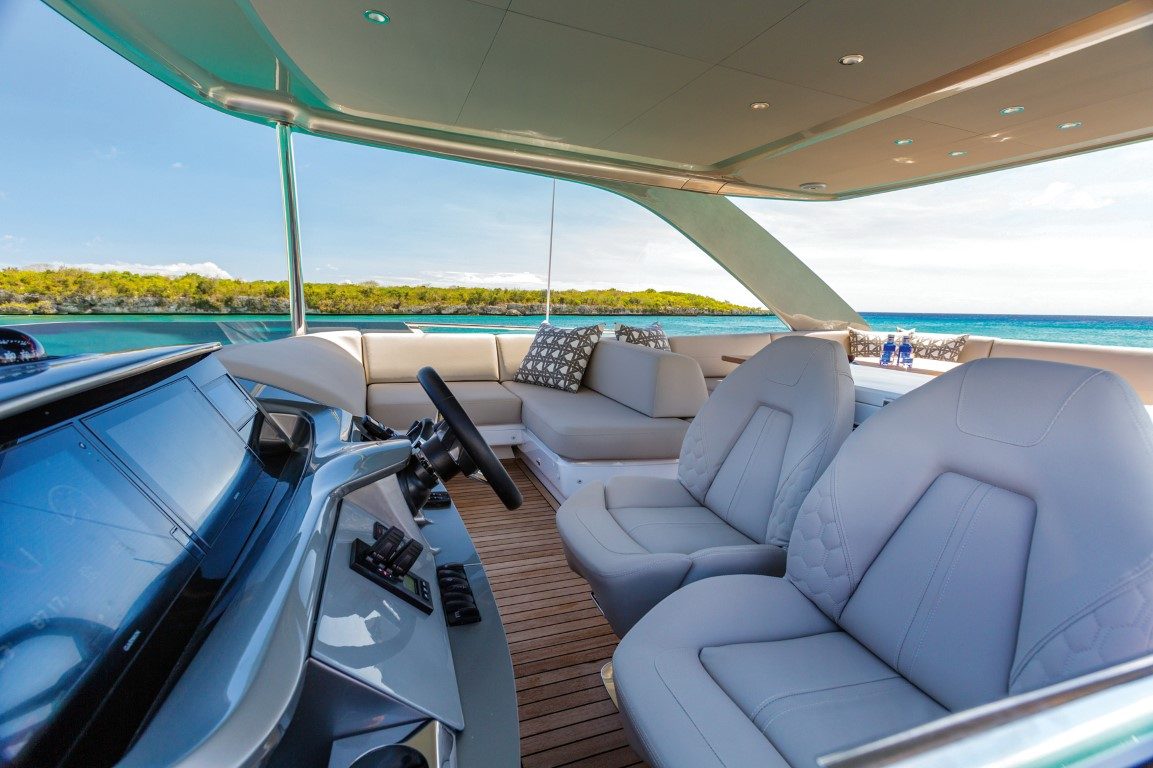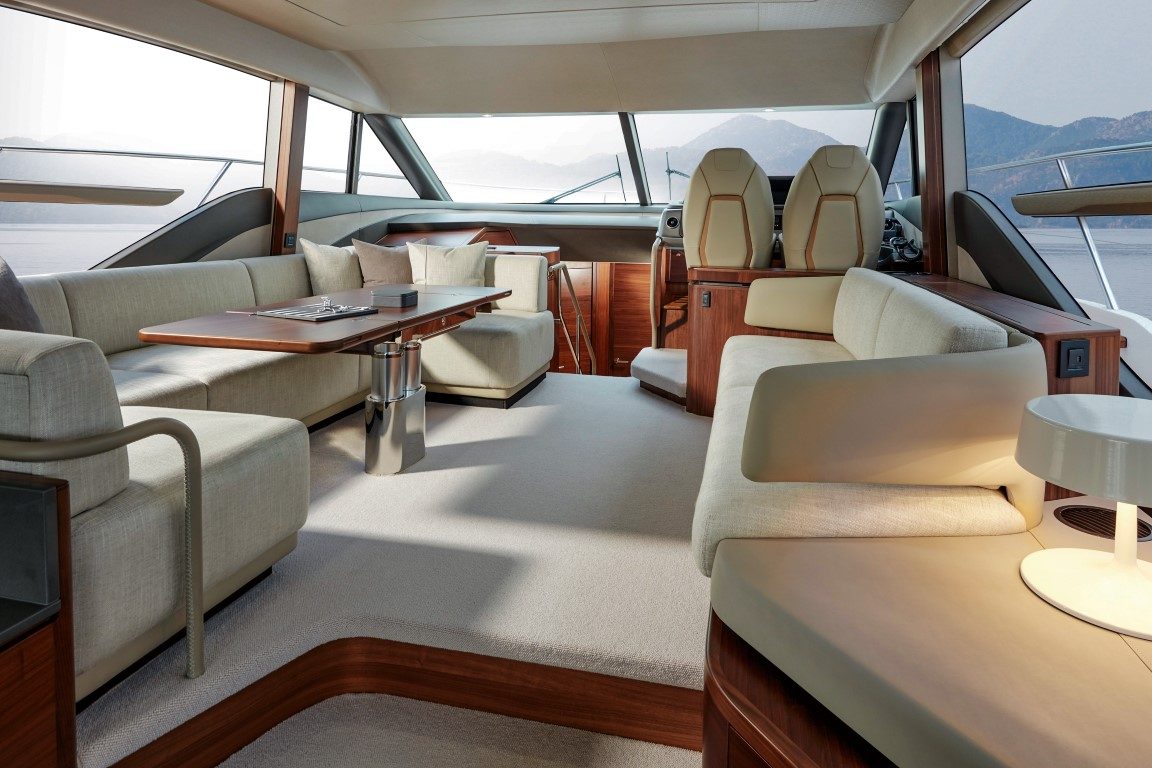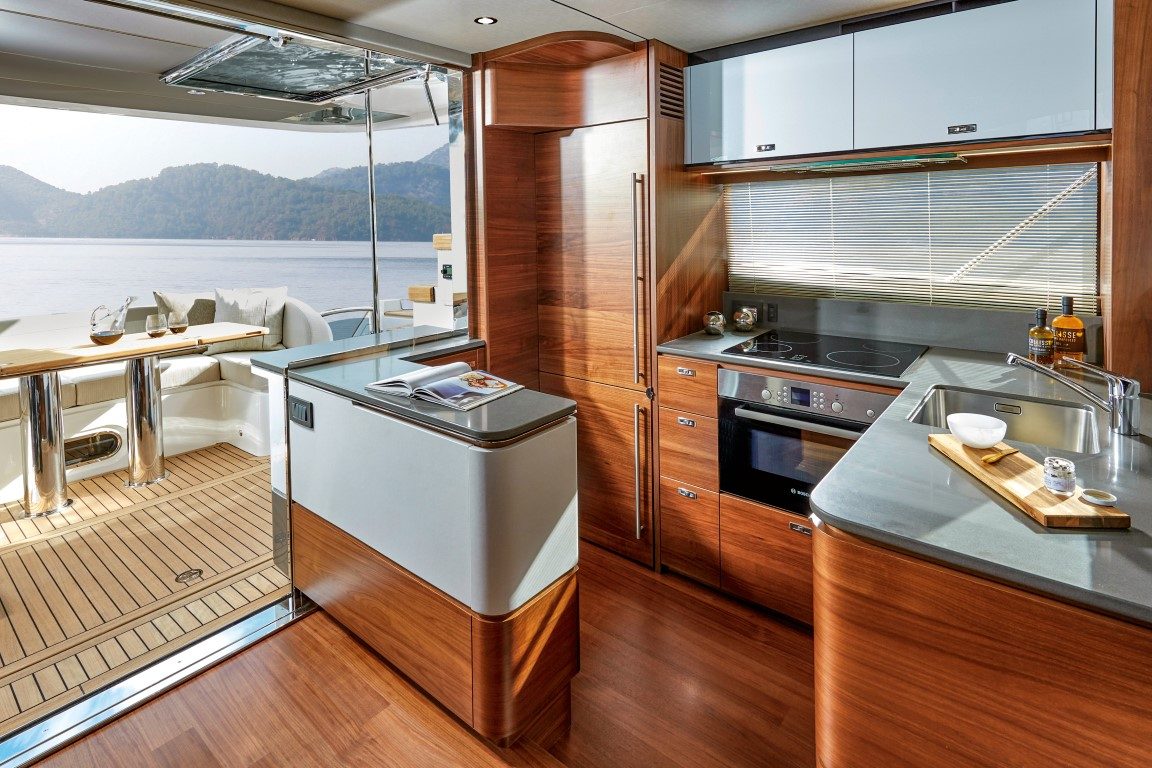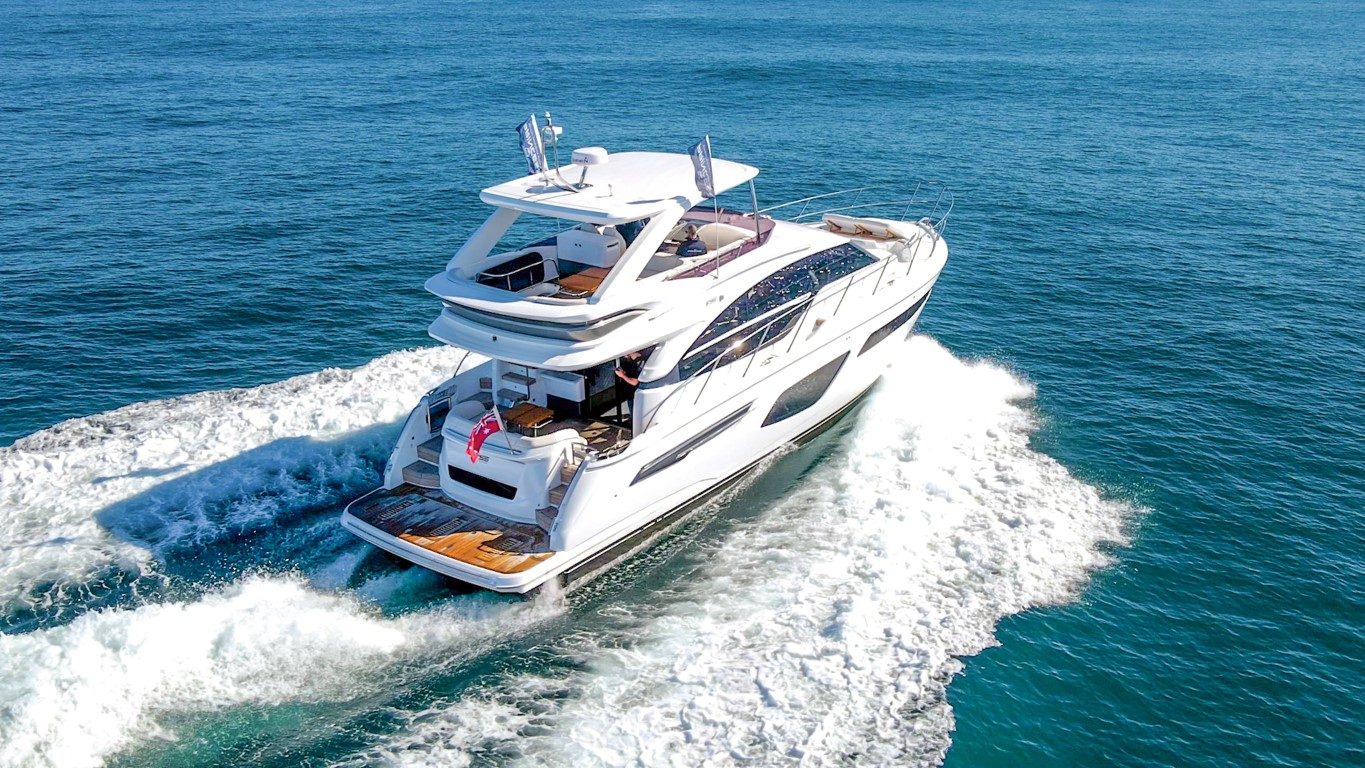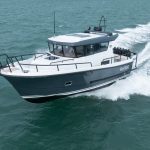‘Behemoth’ is a word which springs to mind or, perhaps more nautically, ‘leviathan’.
- Stylish interiors, superb workmanship and detail
- Volvo Penta diesels very smooth and quiet
- Easy manoeuvring thanks to Volvo EVC joystick linked to bow- and stern-thrusters



